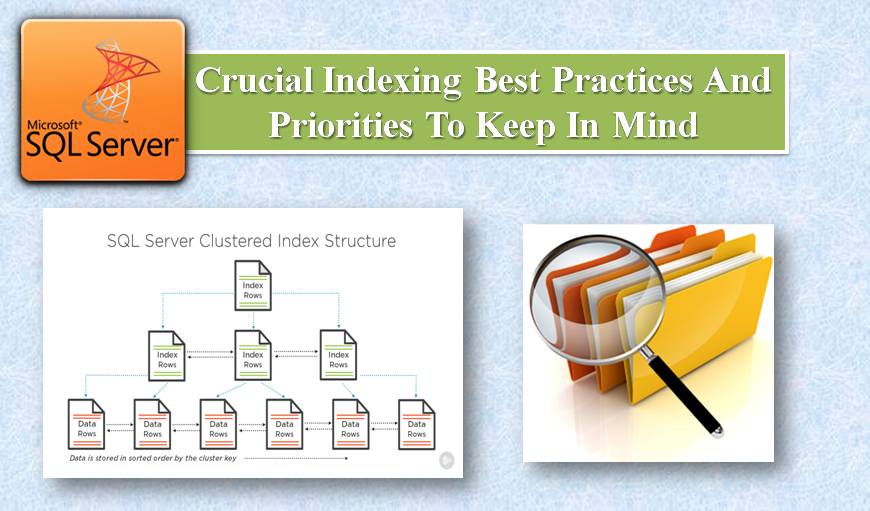This article explains the relevance and importance of indexing in SQL Server along with explaining the best practices and priorities to follow when creating indexes in SQL Server.
Understanding of Indexes and their practices is essential if you are working with SQL Servers and database management. Indexes speed up the search process in the database up to a great extent as it can effectively find all relevant rows matching columns from your query. There are two types of indexes, Clustered Index and Heap Index, and it’s up to the user to decide which they wish to use. So it’s important to have a clear idea about the data access code to utilize the indexes in an efficient way. There are traditional as well as nontraditional ways to approach the indexing in SQL and it depends on the nature of database and production goals to decide the Indexing techniques.

The following article explains the process of Indexing and provides a guide to best practices and priorities to follow.
Best Practices for Indexing
Here are a few practices that users should keep in mind while indexing in SQL-
- It’s important to understand how Data is accessed and maintained, which includes the activities like INSERT, DELETE, UPDATE, and then move to Indexing. There is a need of prioritizing as the data may not be accessed in the same manner each time.
- You should use T-SQL Code to build your indexing strategy and start with functional areas. Also, try having a process that can analyze the indexes.
- Try having an index with multiple columns if that helps in improvement of data access but try to avoid bookmark lookup operations.
- Use only the needy indexes as unnecessary indexes can cause storage problems and improvement issues. Avoid using multiple repeating indexes.
- The order of the Indexes sometimes plays a vital role and can make a good difference in the database (ASC or DESC order)
- Index selection is equally important so users should identify a clustered index for the tables. On the basis of Data Access, you can fine tune or even eliminate them during the validation and testing phases.
Priorities to keep in mind while Indexing
Users should have a proper priority list of indexing while working on SQL Server. Considering your enterprises’ development plan, you should build a proper indexing strategy and database design otherwise it would be hard to maintain the database in the production stage.
It is advised to review the index properly and it should have priority when there is some performance glitch. In most of the cases, if you change or add index and review and test them, you can solve the issues related to performance and they might even speed up the processing too.
It’s true that if changes are made in an application then Indexes also need to be changed. So users should review the access code with indexing in focus and apply changes to the indexing strategy.
In a nutshell, Indexes are one of the most important components of SQL server database and largely affects the performance so users should be informed and aware about the Indexing practices and techniques.
Companies using SQL Server as backend in their line of business applications should always include tool that can repair SQL Server in their backup and recovery strategy. Such foresight can go a long way in preventing data loss in the event of a database crash.
Author Introduction:
Victor Simon is a data recovery expert in DataNumen, Inc., which is the world leader in data recovery technologies, including mdb recovery and sql recovery software products. For more information visit https://www.datanumen.com/